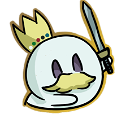Magic: The Gathering's collaboration with Final Fantasy is a huge celebration for fans of both games, especially Final Fantasy fans, who can find their favorite characters and the most iconic moments of the franchise on the set's cards.
In addition to the illustrations, other ways to immerse yourself in the Final Fantasy universe with Magic is through the abilities: the design team was meticulous in planning most of them to have some coherent representation with their in-game counterpart — be it through memes, abilities, costs, or keywords.
As a lover of both universes, Final Fantasy has become my favorite Magic: The Gathering set of all time, and one of the main reasons is how much the rich lore of the main FF games managed to find space in the set. As part of the celebration, I chose the ten best Final Fantasy cards that assertively represented some remarkable moment or element of the games.
It is worth mentioning that Final Fantasy has 310 different cards, and more than a hundred of them were considered for this list. In the end, those that best fit the context of the characters were chosen, or whose narrative of the card itself tells the story or its importance to the game, or even some that mix Magic mechanics with elements inherent to these characters, places and moments.
We also emphasize that only the cards from the main set are in this review. The Final Fantasy Commander complementary set is considerably focused on four specific games and deserves a separate list of the best cards and representations, since these also include some reprints.
10 - Suplex

Images speak louder than words for Suplex. Seeing a community meme turn into a card has a special charm that few cards in the main set could surpass. Its exile effect adds is a bonus since Phantom Train was originally an undead enemy on Final Fantasy VI.
9 - Summon: Knights of Round

Knights of Round is one of the longest Summons in the series — it's second only to Eden from FFVIII — and there are two elements of it that are very well represented on its card: the first is that it's the saga with the most chapters in the set, a reference to how long its attack animation is in Final Fantasy VII.
Over the course of four of these five chapters, it puts twelve knights into play, which, added to Arthur, represented by the enchantment itself, make up the thirteen Knights of Round represented in the Summon — upon reaching the last chapter, we finally have Ultimate End, the name of its iconic attack in the game.
8 - Job Select

A common complaint when the Final Fantasy full set was revealed was the absence of the Warrior of Light from the first game.
While it's justifiable to want to see him in the set when he's one of the cover characters on the booster boxes, the Warriors of Light — whether from FFI or FFXIV — don't originally have a defined image in the main games: they are whatever the players want them to be, giving rise, for example, to the famous White Mage Challenge.
They were, therefore, represented on the various cards with Job Select in the main set: they are the Hero tokens that come into play with the equipment, as exemplified by all the tokens of this type in the set being from Final Fantasy XIV's races and styles.
7 - Dion, Bahamut's Dominant

When he comes into play, Dion, Bahamut's Dominant brings with him a 2/2 Knight token that, as indicated by his illustration, represents Terance, his squire and lover in Final Fantasy XVI.
Once transformed, Bahamut is represented by Eikon's two most memorable moments throughout the plot: his duel against Odin in Sanbreque, basically an act of exhibition to increase the morale of his armies — that's why he increases the power of your creatures — and, in the last chapter, his fury during the events in the Crystalline Dominion, which precedes what is probably the most epic fight in FFXVI.
6 - Cecil, Dark Knight

Cecil is a character who goes through a redemption arc in Final Fantasy IV after submitting to the tyrannical orders of the king of Baron and taking the crystal from Mysidia — two events that Cecil fully blames himself for, and whose concept is recreated in his card with the ability Darkness, which inflicts damage to its controller equal to the amount of damage he causes, and also in his transformation trigger, when his actions reach a threshold where he decides to face his inner shadows and go for another path.
Once transformed, Cecil gains Lifelink, a way of representing his intention to repair the damage caused by his actions as a Dark Knight. In addition, granting indestructible to other creatures refers to his Cover ability, and the White Magic specialization he gains upon becoming a Paladin.
5 - Zack Fair

Isn't it interesting that Zack Fair, known in Crisis Core as “Zack the Puppy” has essentially the same ability as Selfless Savior, a dog?
Much of Zack's narrative impact, especially in the original Final Fantasy VII, revolves around the legacy he left for Cloud at the end of Crisis Core, and which defines the protagonist in practically all the works that take place after this game: be it in his dilemmas with identity in the original game, or in the way Cloud deals with his own grief in Advent Children.
The fact he transfers equipment attached to him represents the equivalent of the Buster Sword, while the counters he also transfers may represent his memory and knowledge as a SOLDIER.
4 - Midgar, City of Mako

Few places in Final Fantasy represent the philosophy of black mana in Magic as well as Midgar from Final Fantasy VII. The city is considered the capital of ShinRa, a mega-corporation whose power and influence in the world was so huge it became the global government.
One of the most iconic flavor texts of a black card in Magic comes from the original print of Dark Confidant: “greatness at any cost”. ShinRa, and the societal divisions in Midgar, represent exactly this philosophy — it doesn't matter if Mako production is slowly killing the planet, or if the experiments with Jenova would eventually lead to a worldwide catastrophe, if these increase the corporation's reins through the world, the better.
This trait is incredibly well represented on the Adventure side on two fronts: first, in ShinRa's own philosophy that any sacrifice is worth it to gain more power, but also in the explosion of Mako Reactor 1 at the start of Final Fantasy VII, where "sacrificing an artifact" to draw cards can be seen as the ideal of "blowing up a reactor to save the Planet", envisioned by Barret Wallace.
3 - Zanarkand, Ancient Metropolis

Zanarkand, Ancient Metropolis may not have as many layers as Midgar, City of Mako, but the subtlety of its adventure is what makes this land so fascinating: the Lasting Fayth can be interpreted as the end of the Pilgrimage journey, where the Summoner arrives in Zanarkand to perform the last summon — in this case, the +1/+1 counters for each land in play represent the path to Zanarkand, where the Summoner goes through several temples.
Another way to interpret it refers to Tidus, Yuna’s Guardian: as the first sentence of Final Fantasy X indicates, the token could be the representation of Tidus, while the +1/+1 counters could be his story, since most of the events of the game are told through a flashback before the group enters Zanarkand.
2 - Tellah, Great Sage

As a Magic player, Tellah, Great Sage was one of the worst cards to come out of the set, but his design tells stories like almost no other card can: Tellah is an old sage in Final Fantasy IV — a trait distinguished both by his extensive knowledge of magic and by being the only character in the party who, as he gains levels, becomes physically weaker as due to his advanced age.
Tellah is the only character at the beginning of Final Fantasy IV to have high-level spells, including Meteor, whose MP cost is 99 while he maxes out his MP at 90 — despite knowing this powerful spell, it requires so much effort to use at his age that he would die in the process, and Tellah knows it.
At one point, however, Tellah casts Meteor, sacrificing himself to save the heroes. All of these elements are found in his card: the support he gives to other characters in the tokens he creates, his extensive knowledge of magic in his second ability, and the moment of his sacrifice when casting Meteor occurs when the player casts a huge spell.
Ironically, Ultimate Magic: Meteor, the only representation of the spell in Magic x Final Fantasy, does not cost enough for Tellah to be sacrificed when casting it.
1 - Kefka, Court Mage

In Magic: The Gathering, there is a keyword called Delirium, which cares about card types in its controller's graveyard. Despite not having this ability himself, Kefka, Court Mage does care about card types in his triggers, having a “pseudo-delirium”.
In Final Fantasy VI, Kefka was a once honorable soldier whose mind was warped when he was the first general of the Gestahlian empire to be infused with Magitek, which gave him extraordinary magical powers but took away his sanity, causing him to enter a state of delirium that eventually turns into nihilism — discarding cards, in Magic, is often associated with loss of sanity, mental extraction, or coercion, all of which are inherent traits of Kefka and his actions in FFVI.
The transformed side also tells stories. Making each player sacrifice a permanent refers to how everyone lost something when Kefka brought the world to ruin upon ascending, while his trigger to draw cards whenever an opponent loses life can be associated with his own nihilism: once the world is destroyed, all Kefka does afterward is strip people of their hope, not allowing them to rebuild their homes or have any glimpse that things could be better, either for pleasure or out of pure boredom — his goal, after all, is destruction itself, and as long as people had hope, his thirst for said destruction would never be quenched.













— Comments 0
, Reactions 1
Be the first to comment